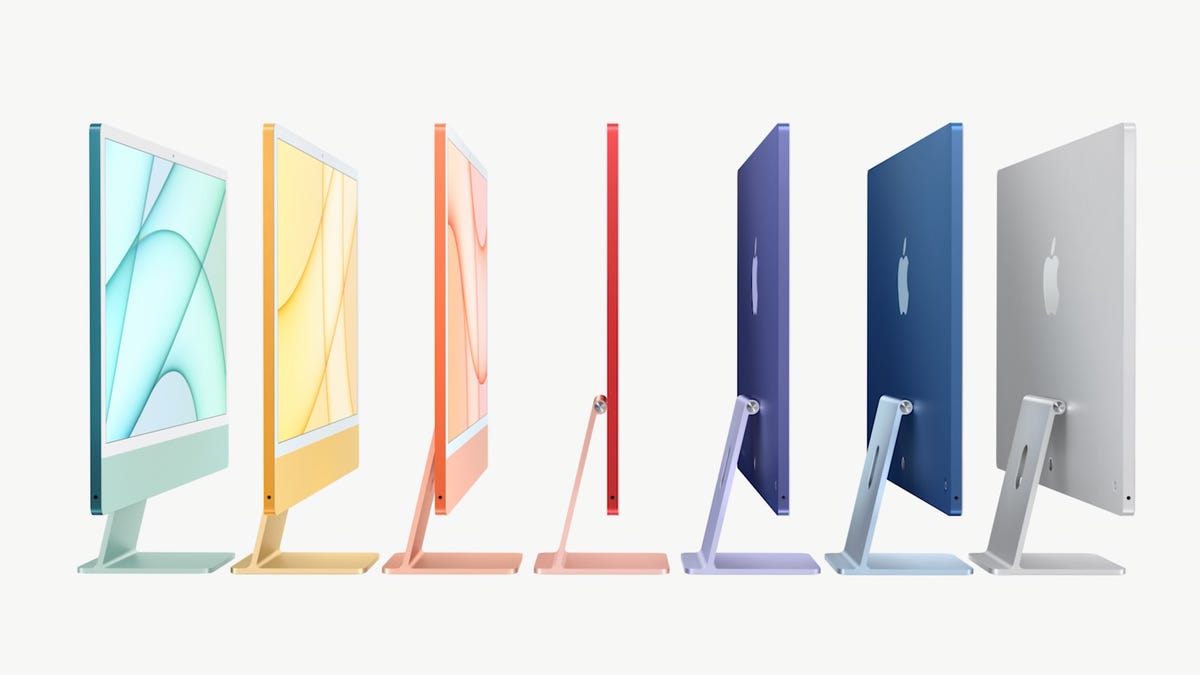
Apple is launching a new set of iMacs with a wide range of colors, a smaller footprint, and the company’s M1 processor.
With the move, Apple is taking the next step in overhauling its Mac lineup with its own Silicon. The Apple M1 processor, based on Arm, gave the MacBook a surge of demand as the laptops launched to rave reviews.
The revamped iMac will start at $1,299 with a choice of four colors. A $1,499 version will have an option of seven colors.
With the iMac, Apple is focusing on a smaller footprint, 1080 FaceTime camera, image signal processor as well as the updates that arrived for MacBooks.
iMac will have 24-inch displays with 11.3 million pixels (4480 x 2520) as well as MacOS Big Sur and four USB ports and two ThunderBolt ports. The advantages of the iMac with M1 are likely to echo the reception to the MacBook with Apple’s custom processor.
iMac with 7-core GPU starts at $1,299 and $1,249 for education, and is available in green, pink, blue, and silver. This version features an 8-core CPU, 8GB of unified memory, 256GB SSD, two Thunderbolt ports, Magic Keyboard, and Magic Mouse.
iMac with 8-core GPU starts at $1,499 and $1,399 for education, and is available in green, yellow, orange, pink, purple, blue, and silver. This version features an 8-core CPU, 8GB of unified memory, 256GB SSD, two Thunderbolt ports, two additional USB 3 ports, Magic Keyboard with Touch ID, Magic Mouse, and Ethernet.
Must read:
Key points about the new iMac:
- The redesign is the first since 2012
- Orders are April 30 with availability in mid-May
- Touch ID will be available on keyboard
- Ethernet will run through the power cable to the iMac
- New M1-powered iMac is “up to 85% faster” than previous Intel-based iMacs for Lightroom and Xcode
With the iMac move, along with the iPad Pro updates with M1, Apple is making it clear that it is moving to its own silicon quickly. Apple also sees M1 as its competitive edge.
In a release, Apple positioned the iMac as a device that’s a home accessory with a thin 11.5 mm profile that “practically disappears.” And the 4.5K Retina display will make a screen for multiple rooms.
Add it up and the iMac brings the following into the M1 fold:
- MacBook Air.
- 13-inch MacBook Pro
- Mac mini.
- iPad Pro.
Another key point for Apple is that the M1 processor enables new designs since there isn’t a need for fans and bulky logic boards.
While the iMac appears to be more of a home computing play, Apple added that the iMac will have thousands of Universal apps such as Microsoft Office, Adobe Photoshop, Quicken and other business staples.



